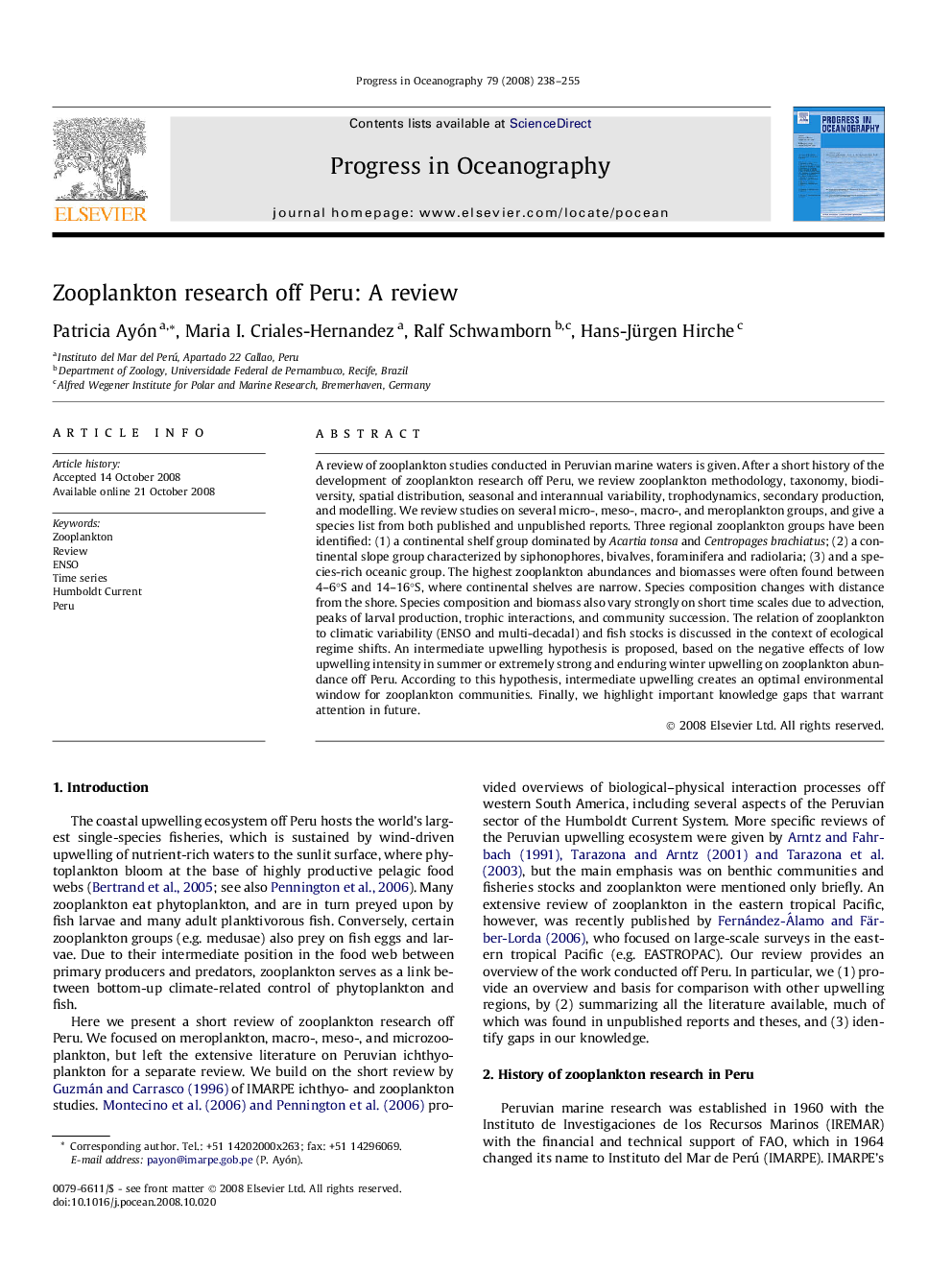| Article ID | Journal | Published Year | Pages | File Type |
|---|---|---|---|---|
| 4553636 | Progress in Oceanography | 2008 | 18 Pages |
A review of zooplankton studies conducted in Peruvian marine waters is given. After a short history of the development of zooplankton research off Peru, we review zooplankton methodology, taxonomy, biodiversity, spatial distribution, seasonal and interannual variability, trophodynamics, secondary production, and modelling. We review studies on several micro-, meso-, macro-, and meroplankton groups, and give a species list from both published and unpublished reports. Three regional zooplankton groups have been identified: (1) a continental shelf group dominated by Acartia tonsa and Centropages brachiatus; (2) a continental slope group characterized by siphonophores, bivalves, foraminifera and radiolaria; (3) and a species-rich oceanic group. The highest zooplankton abundances and biomasses were often found between 4–6°S and 14–16°S, where continental shelves are narrow. Species composition changes with distance from the shore. Species composition and biomass also vary strongly on short time scales due to advection, peaks of larval production, trophic interactions, and community succession. The relation of zooplankton to climatic variability (ENSO and multi-decadal) and fish stocks is discussed in the context of ecological regime shifts. An intermediate upwelling hypothesis is proposed, based on the negative effects of low upwelling intensity in summer or extremely strong and enduring winter upwelling on zooplankton abundance off Peru. According to this hypothesis, intermediate upwelling creates an optimal environmental window for zooplankton communities. Finally, we highlight important knowledge gaps that warrant attention in future.
